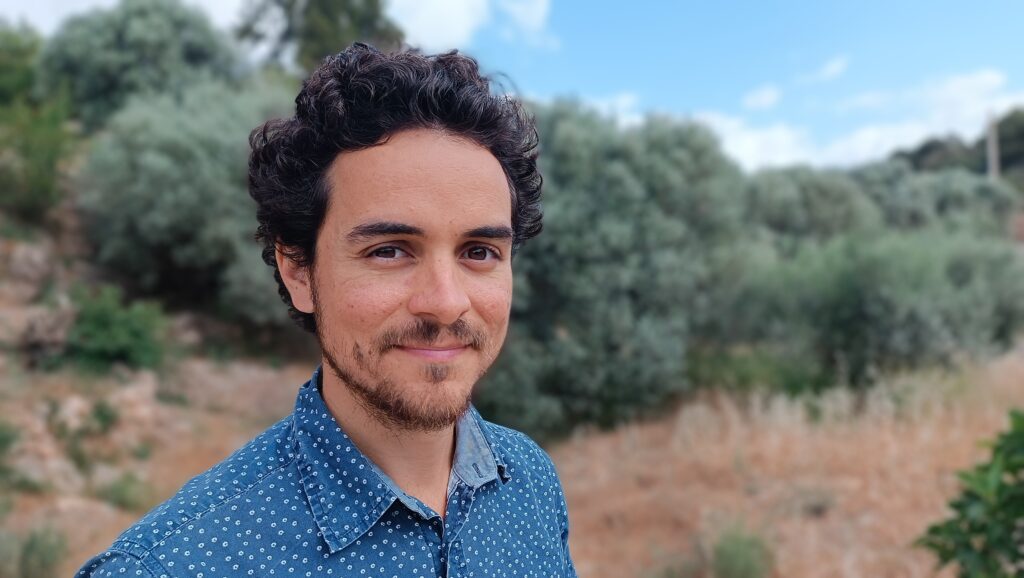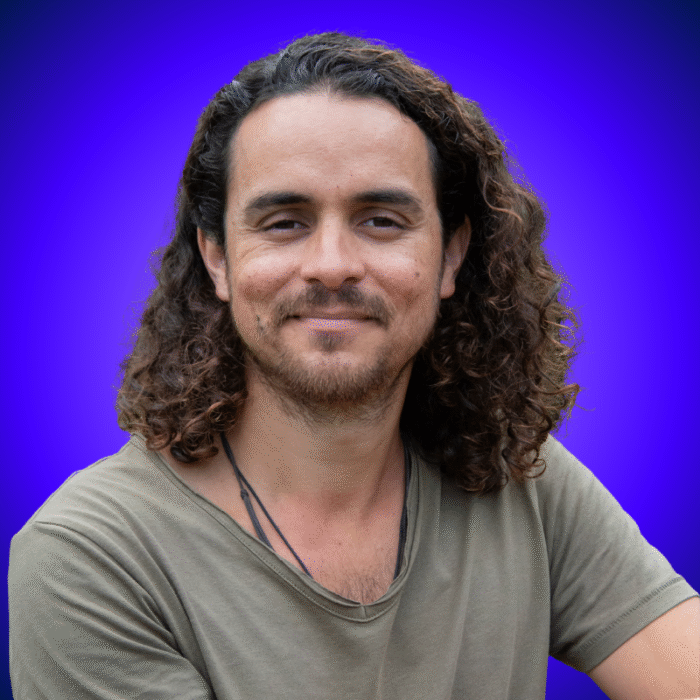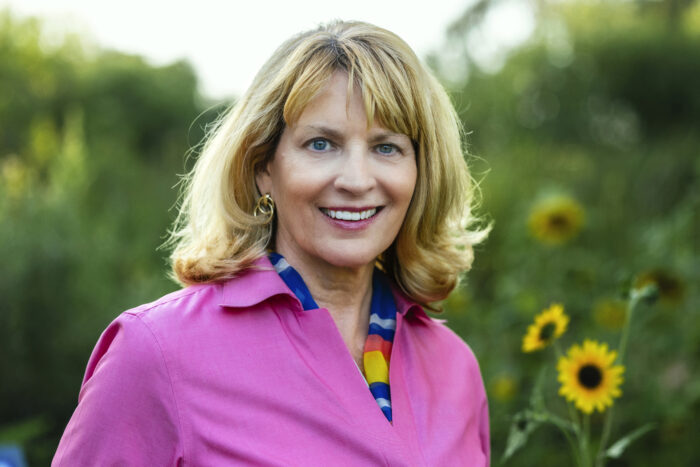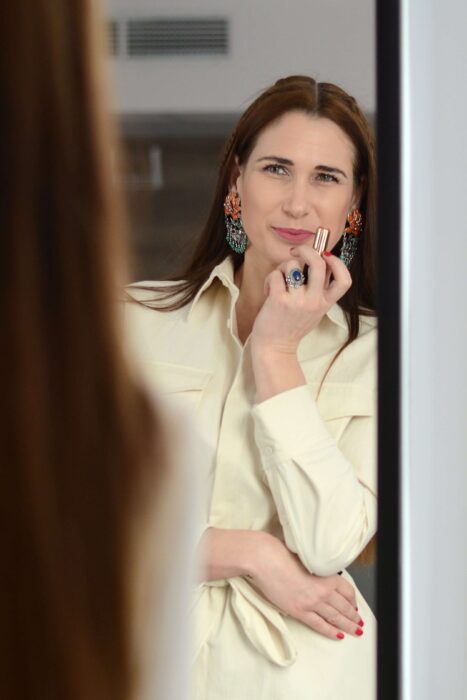In a digital age full of noise, distractions, and surface-level connection, Alex Searle is building something radically different: depth. As the founder and CEO of Humble Mind, Alex is not just nurturing a fast-growing international community, but shaping what it means to belong, learn, and lead with intention in the era of AI and remote work. His unique community ecosystem supports entrepreneurs, thinkers, creatives, and many brilliant women professionals who gather to grow, ask better questions and discuss those in professional circles.
A musician, storyteller, entrepreneur, and father, Alex doesn’t just talk about community. He lives it. And through his Community Builder Bootcamp and Humble Mind ecosystem, he’s helping others build their own.
At Womazing, we are thrilled to share this interview with Alex – someone whose work mirrors our own values of connection, purpose, and empowerment in the new age of AI revolution.

We are in the golden age of communities
–Alex, you often say we are in the “golden age of communities.” Why do you think online communities are still so relevant, especially when many say we should return to more offline, local connections?
-Great question, it’s the kind of thing I’m working every day to learn more about. I think that community building is not a new thing, firstly. We’ve been doing it, for hundreds of thousands of years even, it’s even baked into our DNA as mammals. We exist together and we are able to survive more effectively when we’re together, when we’re making decisions and we’re learning about the environment, when we’re developing ourselves in community rather than in isolation. We all are the product of communities, whether it’s your family, the school you came from, your university, your company, the country you come from – all of these are community structures, big networks, and they help.
It allows us to have a place where we can belong. It allows us to learn and to test new ideas – and allows us to stay accountable to others. Because sometimes if you’re accountable only to yourself, you don’t always get things done. And that’s why communities can be useful. At the same time, I stand by this idea of being in the golden age of communities. Part of that is online communities and online community building as well – because without going too much into it, we are clearly in a time when we’re questioning a lot of big things.
We’re questioning so many things: the meaning of life, the meaning of work, the meaning of purpose. How can we find happiness and joy in our work when AI is all around us? What is intelligence, after all? These are huge questions – and that’s a good thing.
It’s to ask questions, but at the same time, when there are multiple answers—and answers that we can’t always trust—that creates a bit of a crisis, a crisis where we’re not sure whether things are true, whether we can believe them, whether we can trust them, and whether we can make decisions based on that information. So communities help us to make sense of information, help us to make sense of difficult problems and challenges, and help us, certainly in my experience with the communities I’m part of, to ask the questions in a better way.
Because when we can do that, we can make sense of things, and we can say that ’okay, now I understand the world in a little bit better, I can now see what I need to do, where is my place in it, where is my role in it, and how can I help others as well’. So, there’s, a kind of online community. And offline communities, obviously, we all pride the human connection in so many ways. But at the same time, there are ways to have authentic, real experiences online because the world is online and we work, we have colleagues, we connect with our families, everything through a digital interface.
A lot of the time, so many people are working remotely, so many people live in different countries that they weren’t born in. And so often we end up finding communities online first. Then, maybe some of the in person communities, obviously, this is different for everyone, but being able to build and understand how, what it takes to build online communities, I think, is a real strength, not just if you’re interested in building communities, but if you’re interested in building business, if you’re interested in finding a purpose, if you’re interested in really reaching out to people and helping them. So that’s something I’m very passionate about and continuing to learn about as well.
Why community building matters in business and life
–Did you always know you wanted to build communities? How did your path start?
– I didn’t know at first, but the more I do this, the more I realized that I’ve always done some of these things anyway, naturally, even since I was a kid. Finding ways to bring people together, whether it might be at school or putting, I used to be a musician for a long time – being part of many different musical groups and bands. And I always love bringing people together because, in music you speak a common language and you’re able to play together and to plug in together and benefit from being in a group rather than being in isolation. So I think a lot of the temperaments of being a community builder, being curious, being able to communicate.
I’m also an entrepreneur. I’ve started four different businesses, lived around the world and I think also the ability to break the ice, to make people feel familiar in a space that maybe isn’t always familiar, is an important edge in building a community successfully as well.
Humble Mind itself started out as a space where people could just learn and ask questions in community with others about the future of work. But it’s kind of expanded beyond that to be a really fun and interesting environment where people are also still doing that, but they’re doing it through the lens of how can I do this for myself? How can I learn the skills and the mindset and learn about the tools of building a community and apply it to my life?
For me, the question has been whether I want to build a community of my own, or whether I want to carry that learning into the way I run my business and nurture the relationships that matter most. Community isn’t just about groups of people – it’s about how we show up in connection, in work, and in life.
My own path hasn’t followed a straight line – it’s unfolded in its own way, as paths usually do, and along the way, community has continued to shape how I think, how I lead, and how I relate to others. I’ve come to see that I can bring together two things: the very real need people and businesses have to build community and strengthen meaningful relationships, and something I’m genuinely passionate about – and hopefully good at.
– What is the biggest challenge in online community building? And is it different from offline communities?
– Firstly, I don’t think community building is hard necessarily, but more that it takes time – and maybe that’s where the difficulty can come from, whether it’s something you want to stick at, but at the same time, running a startup, developing a product, all of these things are also hard, and I think it’s also because they require different levels of effort and time at different stages.
And the community is similar in some ways as well. However, there are definitely ways where you can make that a lot easier and a lot more focused in terms of your effort on how you’re building a community, who it’s for, what you’re hoping to accomplish as a community, whether or not it has online and or offline components as well, and why you’re doing it, you know, what’s the major purpose, you know, because that’s the difference there between why you might have an audience and why you have a community. Proximity to other people. You’re able to tap into their contribution, their talents, their enthusiasm around the topic -and everyone can be pulling in the same direction.
Whereas with an audience, it’s more of a one-way kind of relationship in that way. There’s nothing wrong with building an audience – it’s just that it’s a different dynamic, and it’s a different way of building a network. I think that communities that can benefit from leveraging both online platforms or online environments, as well as offering where it’s possible an offline component or vice versa, are probably the ones that end up being able to last the longest as well.
Because, you know, you see so many communities, people, you know, say, I’m going to start a community next week – and that happens. And, maybe they get the first couple members in and there’s some enthusiasm for the first few weeks, but then it dies down. And that’s often because we’re not giving people things to do or reason to come back and a rhythm to come back to, for them to keep on learning, to keep on finding value and to stick around and ultimately for them to find their own relationships with the people in that community.
So there’s a process and there’s a structure for sure. And you can do that in both offline and online environments really quite effectively.
Storytelling – the core of connection
– You use storytelling extensively. How does that play into community building?
-I love storytelling because it allows us to connect to ideas – sometimes a lot more easily than numbers, facts, or academic wording, or whatever it might be. People are lit up, and their imaginations are engaged when you tell stories. Because what are stories? Stories are pictures. It’s a different way of communicating information that makes you feel something rather than just think something. If we think about our favorite stories from when we were kids or, some of the best pieces of literature or poetry or art, we all remember that because it had an effect on us emotionally and it made us feel something – and that gets stored in the body. And we remember that sometimes forever. So storytelling is a deeply useful resource, not just for building communities, but really for relationship building and getting someone on the same page to understand an idea for them to feel that they have a contribution to that idea as well, that they can be part of that story in a larger way.
In fact, storytelling is a very underused tool when it comes to creating trust and fostering a sense of shared ownership around real challenges and real things that we all care about. When we can tell a story about where people are and where they can be and what they can do about it and how they can help to fix something, we engage them – and that’s what great brands can do as well: they’re able to tell a story. The product that they sell, that comes later. And if you tell a story in the right way, you don’t need to do any selling anyway, because it helps to create the demand and the need for what you’re doing anyway – great storytellers know that. In a community, it’s a similar type of thing – and what I talk about in the boot camp that Humble Mind runs regularly is this idea of a leading edge.
The leading edge is always about asking the big questions – the ones that matter for our lives, our planet, and our future. Not “how can I tie my shoelaces in a new way,” but how can we care for the Earth, connect more deeply with others, or reimagine the systems that shape our daily lives. These are the challenges worth leaning into, because they open space for shared stories and collective action.
At its best, a community is more than a gathering of individuals. It’s a living system of shared learning and problem-solving, where people choose to stay, contribute, and grow together. That’s when something powerful emerges – not just human intelligence, or emotional intelligence, or even artificial intelligence, but what I call community intelligence: the collective energy of people bringing their unique gifts to solve common challenges. And when that happens, change is not just possible – it’s inevitable.
– How would you define community intelligence?
– We know emotional intelligence, artificial intelligence… but there’s also community intelligence. That’s when a group of people pool their perspectives, ideas, and energy toward a shared mission. It’s how movements begin. It’s how critical mass happens. When enough people contribute their unique value, real change takes place.
When a community has a strong story, the right people, and the right rhythm, it starts to operate beyond the sum of its parts. That’s when community intelligence kicks in. That’s what we aim for.
The myth of engagement metrics
–Your community and the topics you cover in the Master Mind classes are so diverse. How do you keep people engaged across such a wide range?
– First, not everyone is going to be showing up and that’s okay. Some read every email, listen to every podcast, but never comment. And then, one day, they reach out and say, “Thank you, I’ve been here all along.” So engagement doesn’t always look like what we expect. People engage differently: some want to be in every live session, others need distance but still find value.
The key is designing for all types of engagement and being okay with experimentation. So, ask your community what they need, try something, then reflect and try again. And you’ll find that most people who stick around are quite forgiving. You know, it doesn’t have to be right the very first time. It’s okay to try things out and see if it works, because it’ll always be a case of some people like it, some people, you know, will pay less attention to it. So if you can do that, and if you’re okay with that, you’ll find that the community building journey is really a lot easier than it looks. It’s a living system, not a fixed formula.
Beyond virality: finding the right people for your community
–In an era defined by short attention spans and quick content, how do you inspire people to engage with the deeper, longer conversations at Humble Mind?
– In today’s fast-moving world, no message or community will resonate with everyone – and that’s a strength. It allows us to focus on the people who truly connect. At Humble Mind, we’ve found there is a deep hunger for long-form conversations, where listening and reflection matter more than quick content. By showing up authentically, I engage not only as a leader but as someone striving to be a better parent, person, and business builder. From that shared space, the right people gather, real trust forms, and new projects and businesses emerge. True community grows from resonance, not reach.
From community to ECOSYSTEM
– You also speak about ecosystems of communities. What do you mean by that?
– A lot of community courses teach you how to build one and give you templates, frameworks, checklists – but what’s missing is the support system while you build and that’s why I created the Community Builder Bootcamp. It’s part of a wider ecosystem of support. We don’t just give you a playbook. We help you build something that can grow with you.
There are four bassic elements to this:
- The Leading Edge – the big question your community exists to explore.
2. People Curation – being intentional about your first 10–20 members as they set the tone.
3. Rhythm & Ritual – the structure of engagement. Weekly check-ins? Birthday rituals? Monthly meetups? It all matters.
4. Distribution as Community – how you share your value with the world in a non-icky way. When community becomes your distribution model, you don’t need to “sell.”
So understanding distribution and community as an authentic distribution model is something that we teach and something that I think is essential to the long term kind of viability of any kind of community.
And that’s what we’re doing ourselves as well, supporting community builders as an ecosystem, with not just the tools and the templates and the training to build a community, but with the actual support and the ability to help them to think through these important elements, so that when they do build a community and they do decide to commit to doing it.
It ends up being something that works out and helps to add to, you know, value in their lives, value in the community’s lives, and potentially also helping to grow their business too.
– Thank you, Alex. Is there one message you’d like to leave our Womazing readers with?
-Yes. If you are someone who’s feeling the pull to build something meaningful – a network, a mission, a business that makes people feel something – start with your story. You don’t need a huge audience, you need resonance- and the right people. And if you build with authenticity, if you hold space for others while being real about your own needs, you will attract them.
This is the golden age of community. The ones who thrive will be the ones who build with care.
If you’re curious about building a community and would like support on that journey, there is a place for you in the Community Builder Bootcamp – you can join it here.


